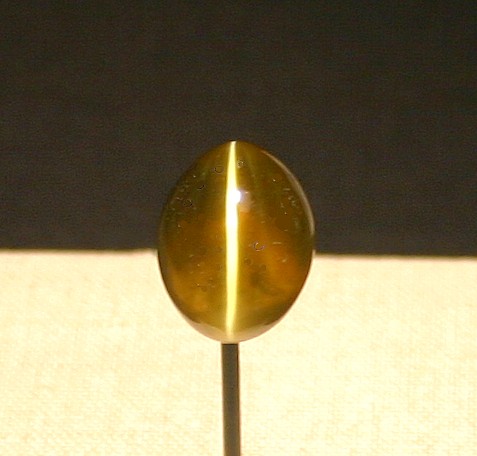
| CHRYSOBERYL MINERAL FACTS |  |
|
| The Gem and Mineral Collector's Photo Gallery by Nevada Outback |
|
. Chrysoberyl Mineral Facts: Chemical Formula: BeAl2O4 Colors: Chrysoberyl can be colorless or of some light shade of green, yellow, or brown. Alexandrite is the photochroic form changing from green to red-purple form that is green by daylight and red by incandescent light. It is colored by chromium. Chrysoberyl's streak is white. Hardness: 8.5 Density: 3.6 Cleavage: Indistinct Prismatic cleavage in three directions.
Crystallography: Orthorhombic Luster:. Chrysoberyl has a glassy luster. It is transparent or translucent. Optics: (Refractive Index): a= 1.7470, b= 1.7484, y= 1.7565 |
|
|
Composition,
Structure and Associated Minerals: The crystals are often twins, forming trillings or sixlings, with the twinning plane, forming pseudohexagonal groupings. Simple crystals are usually tabular and striated vertically. The term chrysoberyl comes from the greek words for golden and beryl. The main use of chrysoberyl is as a gem and collectors stone but it not commonly found in most jewelry stores because of its rarity. The ordinary yellowish green stones are comparatively inexpensive, but rare. Alexandrite is much more expensive, and brings more than $1000 for a fine quality one-carat stone. The cat's-eye variety may also sell for very high values in fine quality stones. Four distinct varieties are
recognized.
Identification and Diagnostics
Occurrence,
Localities and Origins: Return to the Mineral Collectors Information Page |
|
|
 For More information about Chrysoberyl, see: Chrysoberyl - Cats Eye and Alexandrite |
|
|
Please note that the author, Chris Ralph, retains all copyrights to this entire document and it may not be reproduced, quoted or copied without permission.

NEVADA OUTBACK GEMS TURQUOISE AND JEWELRY